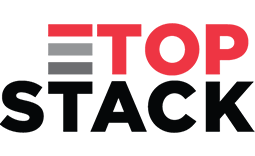Tips for Following Up After Submitting a Resume

You can feel powerless after submitting a resume. You’ve done the work of creating a clean, crisp resume you feel represents your best work. The job description seems to fit your skills. The company even checks out well on sites like Glassdoor. But once you hit the send button on the electronic submission of your resume, it’s just a waiting game where all the power rests in the hands of the employer.
Or does it?
Here’s What to Do After You’ve Sent Your Resume
Today’s resume application can feel cold and impersonal. Sending a resume into the void without even the name of the hiring manager makes for a potentially awkward process if you’re trying to follow up. However, sites like LinkedIn allow the job poster to add their profile picture and a link to their page. Check the ad you submitted to see if the job poster took this friendly approach. See if you can, first, connect to the poster. Send a note with your request that alerts them to your application and thank them for allowing you to share your credentials.
LinkedIn is generally a good resource for job applicants, because you can find the job poster or perhaps someone in the HR department in your connections or through a simple search. While you don’t want to come across as a stalker, you can certainly try to follow up on your application, whether you applied on LinkedIn, a job board like Indeed, or perhaps on the company website.
It’s perfectly appropriate if you haven’t heard back in two weeks or so to reach out to check on the status of your application. There are several ways to do this:
- Email gives the hiring team a record of your correspondence; so many prefer this method of contact. Generally, tracking down an email isn’t hard; most websites have some sort of electronic contact information. Make sure your subject line is concise. “Following up on (date) resume submission” is a good subject line to use. The body of the email should include the name of the job you applied for. If you don’t know the hiring manager’s name, the salutation should be, “Dear Hiring Team:”
- Some people choose to send a paper letter at this time to follow up. This isn’t a bad idea, because it’s an unusual approach in today’s electronic submission process. Use a standard business-style format and the same kind of content you’d use in a professional email. Make sure to include your contact information in the signature line.
- A phone call could also work. Try these either first thing in the morning or late in the afternoon, when people are not usually stuck in meetings. If you haven’t been able to find out the name of the hiring manager, just ask for the HR department when you call. Try calling twice before leaving a brief message with the job you applied to and your name and contact information. Offer to clarify any information they might need and thank them for their consideration of your credentials.
One important caveat is to check the ad you applied to; sometimes they will say not to call the company directly. If this is the case, follow their request.
One way to take the guesswork out of the hiring process is to work directly with a recruiter at Top Stack. We take our candidate and client relationships very seriously and work hard to keep you in the loop at every step in the process. If you haven’t worked with a recruiter before, it’s a free service that will give you a leg up on other candidates who are blindly submitting an online application. Contact us to talk about your future.











